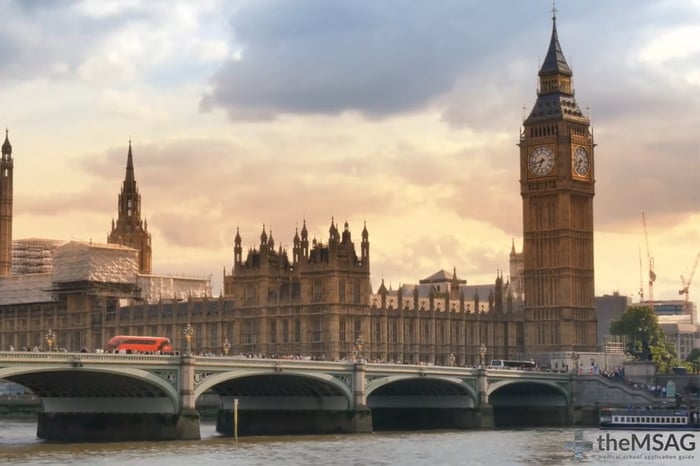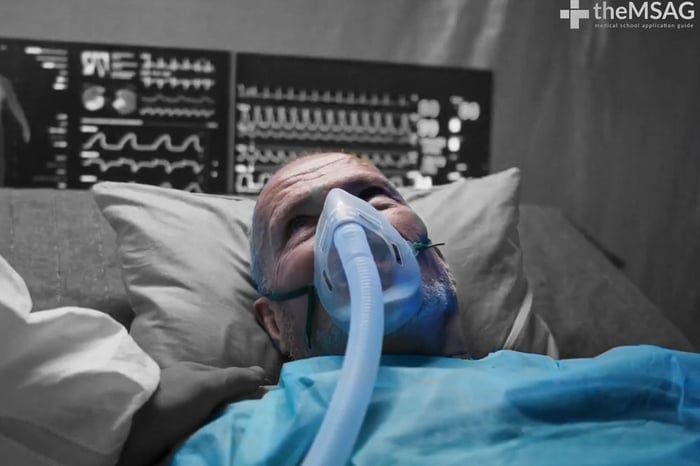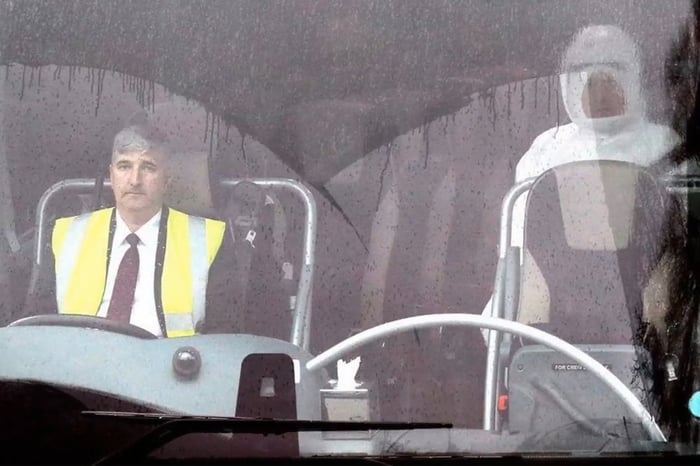
COVID-19 - How the UK Handled the Pandemic
This has been a uniquely challenging situation for governments around the world. As of the 12th February 2021, the UK has had over 4 million people test positive for COVID-19. As of the same date, the UK has had over 100,000 deaths from COVID-19. The COVID-19 pandemic has been one of the greatest peace-time challenges facing the UK government. Interviewers are likely to ask for your opinion on the handling of the pandemic. The aim of this blog is to give you an overview of the UK Government’s response to COVID-19.
The UK government has implemented various strategies to try to control the COVID-19 pandemic. They have introduced a series of laws to stop people spreading the virus such as enforcing lockdowns. The UK government announced its first national lockdown at the end of March 2020 which lasted approximately seven weeks. There was another four week national lockdown in November 2020 and a third national lockdown began in January 2021. Furthermore there have been a series of local measures introduced throughout the pandemic.
We will now explore in more detail how the incidence and mortality rates of COVID-19 have fluctuated since January 2020 and how the UK government has responded.
January to April 2020
This is a graph showing the daily number of positive COVID-19 test results between the 30th January and the 30th April 2020.
The first two positive test results were reported on the 30th January 2020. The weekly average of daily positive COVID-19 results remained low until March 2020. The daily positive COVID-19 results rapidly increased from 33 cases on the 1st March to 4,513 cases on the 31st March. In April the number of daily positive cases plateaued. There were 4907 positive COVID-19 cases on the first day of April and 4957 positive COVID-19 cases on the last day of April.
This is a graph showing the daily number of deaths within 28 days of a positive COVID-19 test result, between the 2nd March and 30 April 2020.
The first death was recorded on the 2nd March 2020. The number of reported deaths increased at a rapid rate to 507 deaths on the 31st March. The figure continued to increase in early April to a peak of 1072 deaths reported on the 8th April. Numbers then decreased to a total of 549 deaths on the 30th April.
Below is a summary of some of the key events that took place during this period:
- 31st January: The first two cases of COVID-19 confirmed in the UK.
- 2nd March: The first UK death confirmed.
- 12th March: Public Health England halt contact tracing as widespread infections overwhelm capacity.
- 17th March: NHS England cancels all non-urgent operations and frees up 30,000 beds.
- 21st March: Food, leisure and entertainment venues close.
- 23rd March:Start of the first UK national lockdown and the introduction of the 2m social distancing rule.
- 2nd April: Matt Hancock, the health secretary, announces a target of 100,000 tests per day by the end of month.
- 28 April: Testing capacity reaches only 73,000.
May to September 2020
This is a graph showing the daily number of positive COVID-19 test results between the 1st May and the 30th September 2020.
On the 1st May there were 4731 reported positive COVID-19 cases. This number fell significantly to 1081 at the end of May. This decline continued throughout June and July. The lowest daily number of cases in this period was reported on the 12th July at 369 positive cases.
The average number of daily positive COVID-19 cases gradually increased during August. This was followed by a more rapid increase in September. On the 1st September there were 2250 positive COVID-19 cases reported and on the 30th September there were 12,560 cases.
This graph shows the daily number of deaths, within 28 days of a positive COVID-19 test result, between the 1st May and 20th September 2020.
The number of deaths on the 1st May was 567. This figure declined every week until mid- August with a low of 3 deaths recorded on the 19th August. The number of daily deaths then began to increase from mid-September with 57 deaths recorded on the 30th September.
Below is a summary of some of the key events that took place during this period:
- 10th May: An easing of restrictive measures began. Prime Minister Johnson asked those who could not work from home to go to work, avoiding public transport if possible. Unlimited outdoor exercise and driving to outdoor destinations within England was allowed.
- 1st June: Outdoor gatherings of upto six people from different households were allowed. Primary schools re-opened for certain year groups.
- 4th June: Face masks became compulsory on public transport.
- 10th June: ‘Support Bubbles’ were created for those living alone.
- 29th June: A local lockdown was introduced in Leicester following a significant rise in cases; this became the first of many local lockdowns.
- 24th July: It became compulsory to wear face masks in shops.
- 25th July: Leisure centres and gyms re-opened.
- 18th September: The government tightened restrictions in parts of the North-East of England. Pubs were told to close every day from 10pm to 5am, and households were not allowed to mix.
- 22nd September: Tightening of COVID-19 restrictions were announced by the UK government which included 10pm closing times for pubs across the UK and a ban on households meeting in other households in Scotland.
October to December 2020
This is a graph showing the daily number of positive COVID-19 test results, between the 1st October 2020 and the 31st December 2020.
On the 1st October, there were 13,188 reported positive COVID-19 cases. The number of cases rose throughout October and November to a peak of 31,503 cases on the 3rd November. From mid-November to early-December the number of cases began to fall, however the cases dramatically increased again throughout December. On the 1st of December there were 16,458 cases reported, compared to 52,464 cases on the 31st.
This is a graph showing the daily number of deaths, within 28 days of a positive COVID-19 test result, between the 1st October and the 31st December 2020.
The number of deaths on the 1st October was 66 and this rose steeply to 320 deaths on the 1st November. The daily death rate then followed a more gradual increase in November and December. There were 401 deaths on December 1st, rising to 709 deaths per day by the end of the year.
October also saw the introduction of COVID-19 tier regulations, which replaced existing local lockdown restrictions.

Below is a summary of some of the key events that took place during this period:
- 14th October: COVID-19 tier regulations come into force. Liverpool became the first region to be placed under tier 3 restrictions.
- 21st October: Wales entered a three week ‘firebreak’ lockdown. This was a strict lockdown and meeting people from other households indoors and outdoors was banned.
- 31st October: Prime Minister Boris Johnson announced that England would enter a second national lockdown for four weeks from the 5th November, when pubs, restaurants, leisure centres and non-essential shops would close. Unlike in March, schools, colleges and universities would remain open.
- 2nd November: A five-tier system came into force in Scotland.
- 23rd November: Trials showed that the COVID-19 vaccine developed by Oxford/AstraZeneca was 70% effective, which could be as high as 90% by tweaking the dose.
- 2nd December: The BioNTech and Pfizer vaccine was approved by the Medicines and Healthcare products Regulatory Agency (MHRA) making the UK the first country in the world to approve a COVID–19 vaccination.
- 8th December: The UK immunisation campaign started. 90 year old Margaret Keenan becoming the first individual to receive the Pfizer/BioNTech vaccine.
- 19th December: A new ‘tier four’ measure was announced by the UK government and was applied to London, Kent, Essex, Bedfordshire and Hertfordshire. This was to try and control a new variant of COVID-19. The new variant was becoming more prevalent and appeared to be more contagious. Under the new tier four restrictions, people were not permitted to interact with others from outside their own household.
- 20th December: More than forty countries around the world introduced bans on travel from the UK in response to the new variant.
- 30th December: The Oxford-AstraZeneca vaccine was approved for use in the UK.
January 2021
In January the number of positive COVID-19 test results was rapidly increasing; on the 1st there were 31,656 cases and on the 2nd there was 59,137. Deaths also tragically increased. On the 1st January there were 564 deaths reported and this rose to 1,162 daily deaths only a week later. On the 5th January 2021, the Prime Minister announced that England would enter a third national lockdown, with similar restrictions to the first lockdown in March 2020. These restrictions are thought to last until mid-February.
Comparing the UK to other European countries
It is interesting to compare the UK data with that of other European countries.
The graph below is looking at the confirmed cases of COVID-19 in the United Kingdom, France, Italy, Germany, and Netherlands. Specifically it is looking at the seven-day rolling average of new cases per 100,000 people, in each country from the 25th January 2020 to the 5th January 2021.
Italy was the first European country to see a surge in COVID-19 cases, with a peak in mid-March 2020. The other European countries in this graph experienced a peak slightly later on in early April 2020. All the countries shown saw a decrease in COVID-19 cases throughout May, June and July. Cases in all countries started to rise again in September to a peak between early and mid-November 2020. France saw the highest peak in November. All countries saw a decline in cases in the last half of November and early December.
In December 2020 and January 2021, the United Kingdom had the sharpest increase in cases out of the European countries shown. The rate in the UK rose from an average of 22.1 cases per 100,000 on the 2nd December 2020, to an average of 86.4 cases per 100,000 on the 6th January 2021. It is important to consider why the UK had such a dramatic increase during this period. One factor to consider is the potential effect of household mixing over the Christmas period. The UK government allowed some of the population to form a ‘Christmas bubble’ which meant that you could visit another person’s house on the 25th December.
However, a recent paper in The Lancet stated that the likely culprit for the dramatic increase in cases in the UK, was the new variant of COVID-19, which is thought to be more easily transmissible.
Summary
There is a lot of information within this article and you will not be expected to recite exact statistics during your interview but it is important to have an understanding of how the pandemic unfolded and how the government acted in response to the changing number of positive cases and deaths. In our next posts we will comprehensively explore the different opinions on the way the pandemic has been handled, both positive and critical. It is also important to have an awareness of hot topics other than COVID-19; read our NHS Hot Topics blog to help you prepare. theMSAG has a range of resources to help you achieve interview success. Click here for more information.










